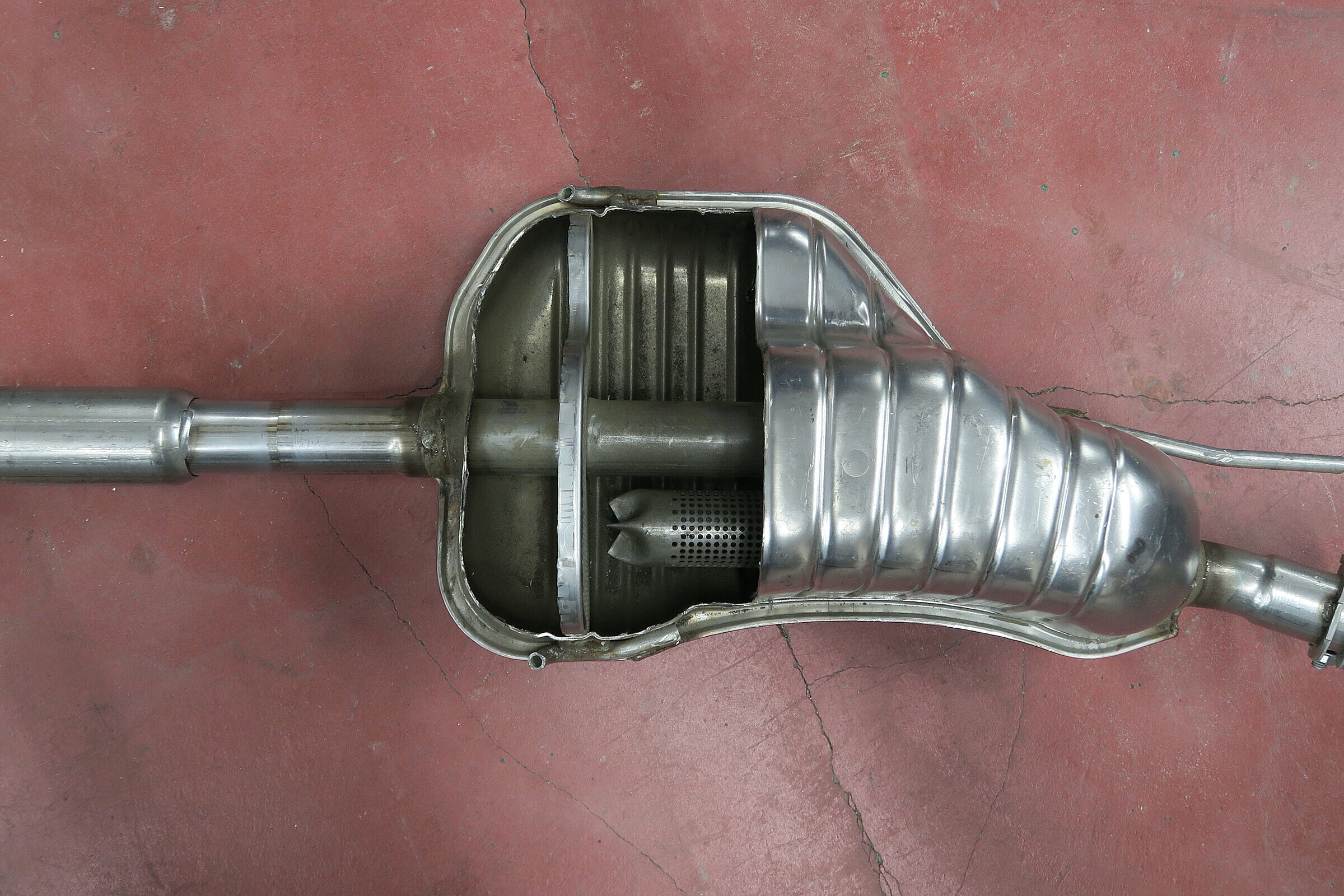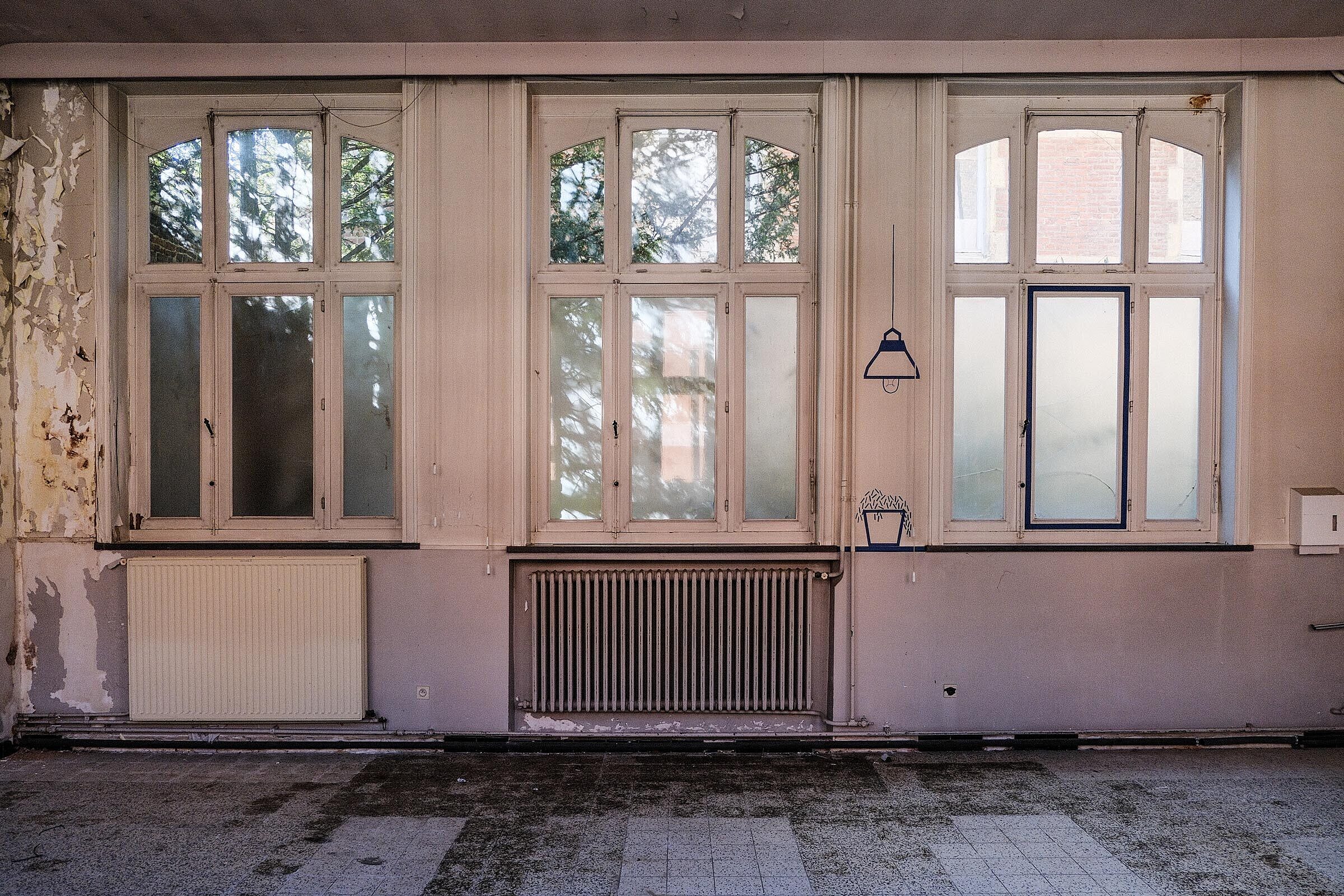-
Location:Sint-Agnesschool, Kapucijnenvoer (achterkant Anatomisch Theater)
-
Accessibility:This location is wheelchair accessible.
A series of biomorphic sculptures plays with the sonic properties of used car parts and seashells.

Irish artist Lucy Andrews is fascinated by the relations between natural and human-made systems. In this new work, Andrews repurposes used car silencers (devices designed to make the sound of a car tolerable to the human ear) and the interior spirals of conch shells. These parts, of dead organisms and defunct machines, have the ability to redirect and change sound through an internal tunnel-like structure. There’s an idea that the sound of the ocean can be heard within a seashell. This phenomenon is caused by the reverberation of ambient sound within the shell’s cavity, in a way that mimics breaking waves. A Distant Roar plays with the idea that an object, taken out of context, can register part of its previous sonic environment, and considers the experience of environmental sound, of both natural and mechanical origin.

The Saint Agnes building, which has looked abandoned for a long time, rose in the 1920s to a design by city architect Eugène Frische. It was an extension of the city girls’ school that Frische’s predecessor Edouard Lavergne had built on Kapucijnenvoer in 1874 – 1875. Originally, on the site of the girls’ school was Leuven’s first botanical garden, intended for teaching medical students. In the 1820s, a new herb garden was built across the Kapucijnenvoer. The university took possession of the school buildings in the second half of the 1950s and made them available to the St Elisabeth Institute of Nursing and — later — to the Nursing and Midwifery Department of the Leuven Catholic University College. Since 2008, the St Agnes building has been largely empty, although events have still taken place there from time to time, in 2016, for example, the Leuven students’ art parade Ithaka.
Text: Liesbet Nys (KU Leuven)
2025
➤ Commission: STUK
➤ Used car silencers and exhaust pipes, steel stands, motorway relaxation soundtrack (5 hour loop), phone, speaker, cast aluminium seashells














